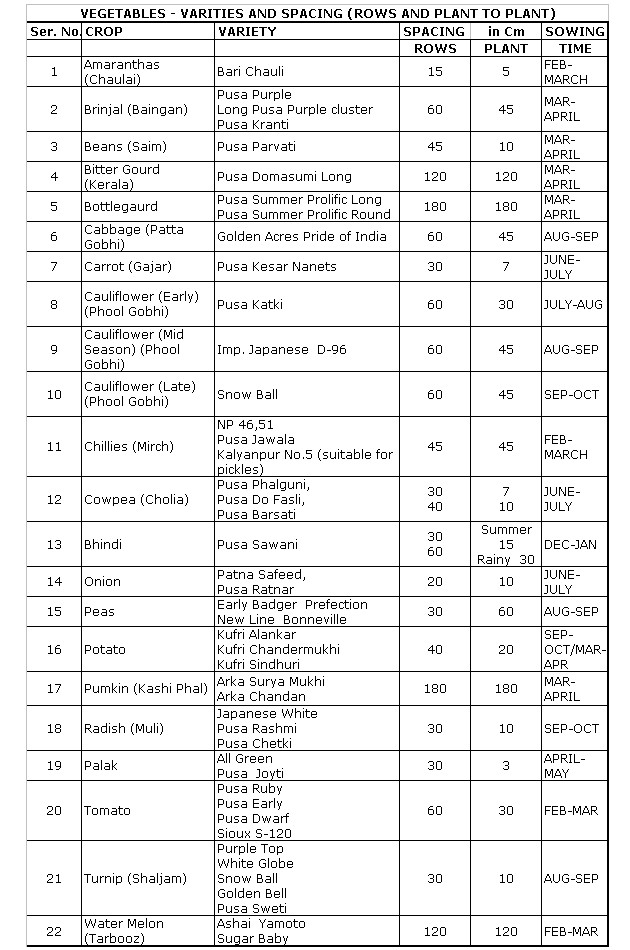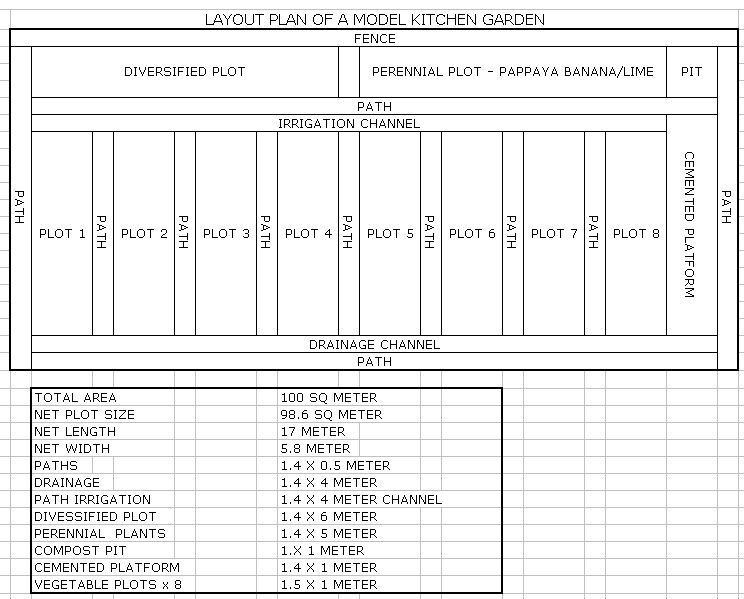

KITCHEN GARDEN
If you have the luxury of a spare space in your back or front yard, this is great. If not, this is still something you could try if you are living in a cooperative society and even have other members participate in growing your own vegetables that can be shared between all the residents of your apartment building.
Selection Of Site
Vegetables can be grown on any open and sunny space available in your plot. The availability of water should be the main consideration. A rectangle garden is preferred to a square one. It should also have proper drainage facility.
Personal Attention
Vegetable plants like any other plant need love and care to grow and yield a bountiful harvest. A daily hour spent with your plants in the Kitchen Garden can do wonders.
Size
Depending upon the land available a Kitchen Garden can be spread over 50 to 500 Sq. Meters of land. For a family of 3-4 members about 100 Sq. Meters is sufficient.
Fertilization
The plants in the Kitchen Garden require a good amount of fertilization for proper growth. The major nutrients needed for plant growth are Nitrogen, Phosphorous and Potash.
Each of these nutrients has different functions and should be applied without hesitation. The suggested balance of the requirement is
A
Top Dressings
This is to be followed by two top dressings of Urea also at the same rate i.e. 125 to 150 gm per 6 Sq. Meter bed. The first top dressing is to be applied after 25-30 days of the sowing or the transplantation and the second one should be applied after 40-45 days of the sowing or the transplantation. After the application of the top dressing, the beds should be irrigated.
Irrigation
The soil should be made thoroughly wet once a week. However, if you observe that the plants do require water as indicated by drooping leaves etc., you may apply light irrigation to the plants.
Growing a Kitchen Garden means…
1. Save money
2. Ensure a fresh availability of vegetables
3. Exercises the body
4. A thrill to see your vegetables grow
Below are the size details of a sample Kitchen Garden:
Total Area 100 Sq. Meter
Length 14 Meter
Width 7 Meter
Net Vegetable Plot Size 1.4 x 4 Meter
Diversified Plot 1.4 x 6 Meter
Path Irrigation 0.5 x 4 Meter Channel
Drainage 0.5 x 4 Meter
Perennial Plants 1.4 x 5 Meter
Compost Pit 1.4 x 1 Meter
Cemented Platform 1.4 x 1 Meter
Here’s a list of vegetables and spacing requirements (between rows and each plant)

KITCHEN GARDEN LAYOUT
